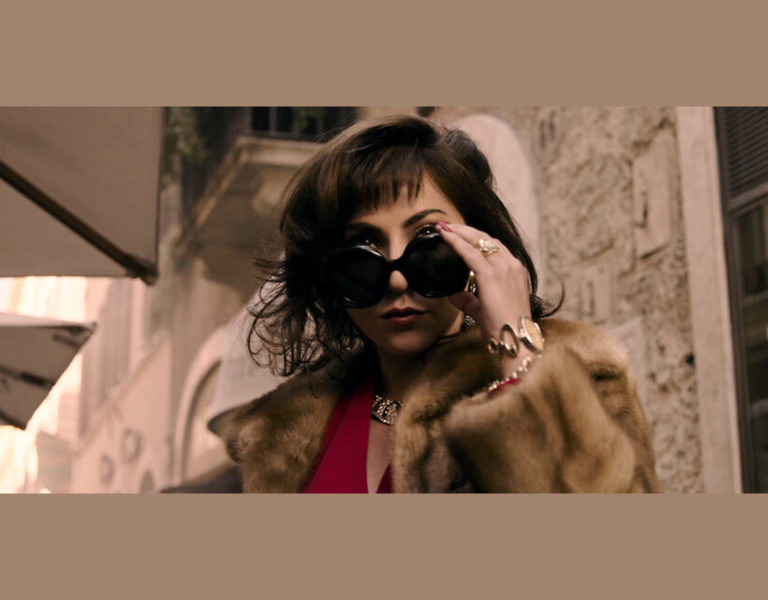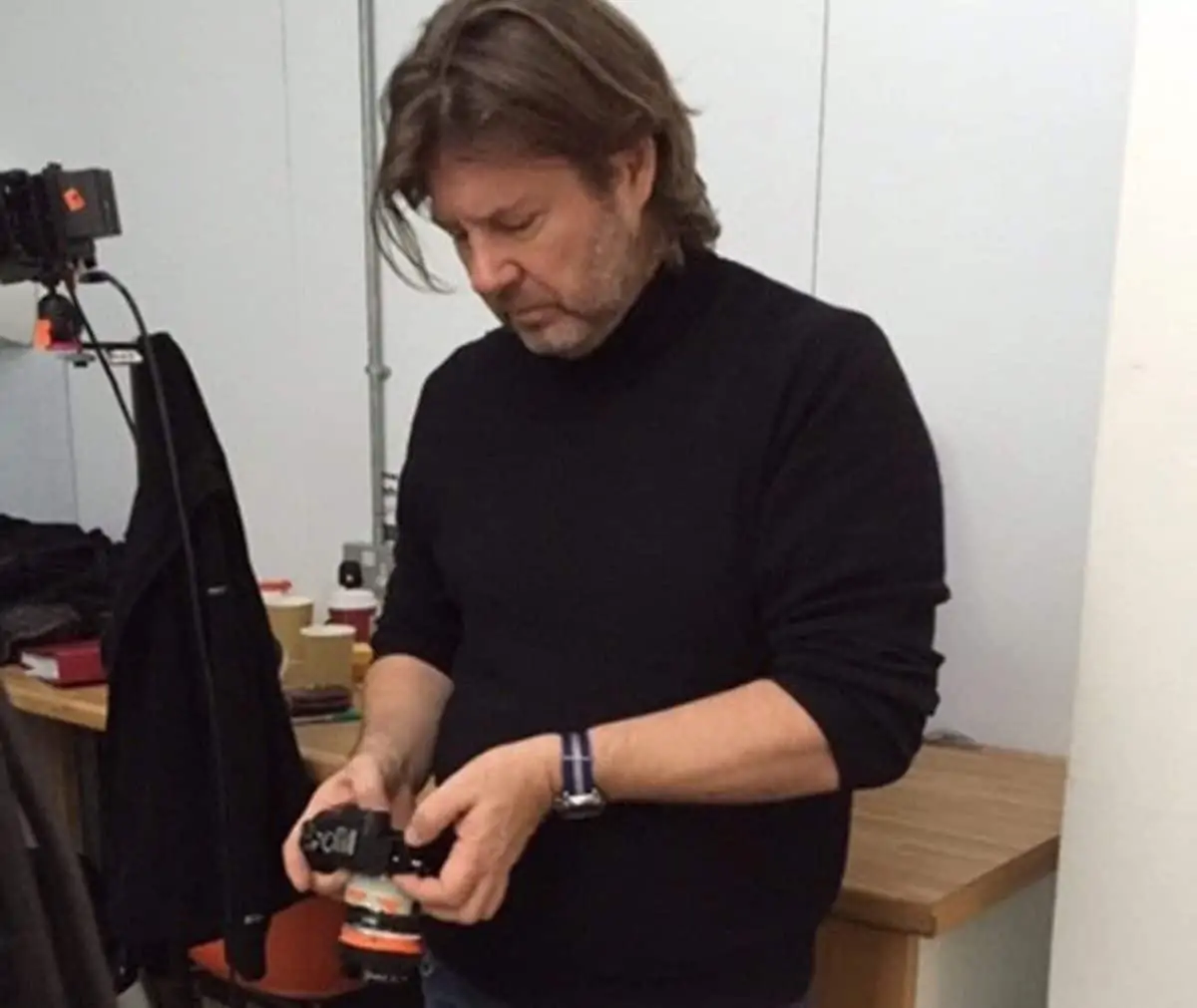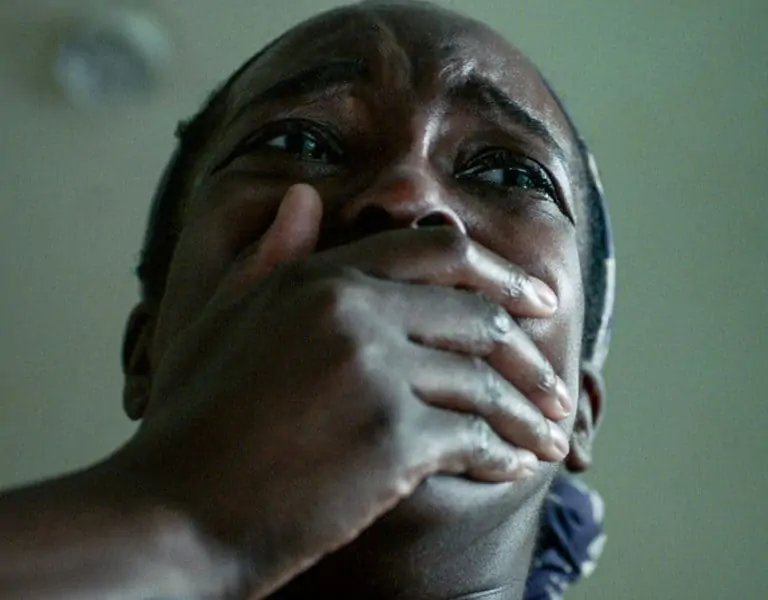ART HOUSE
Combining three self-contained narratives in one and shifting between different eras, Nexus Studios’ stop-motion creation chronicles the events that unfold in one unconventional house.
While experienced in the unique world of stop-motion, having worked on productions such as Corpse Bride, Frankenweenie, and Isle of Dogs, British cinematographer Malcolm Hadley GBCT revelled in the new tasks presented by The House, a beautifully crafted, eccentric film with a dark comedic twist, produced by UK-based Nexus Studios and streaming on Netflix.
Directed by Belgian filmmakers Emma de Swaef and Marc James Roels and set in the 1800s, the first tale in the anthology follows the impoverished Raymond who meets a mysterious benefactor promising to restore him and his family to their former status. Already enamoured with the storytelling in the directors’ previous award-winning productions such as Oh Willy… (2012) and This Magnificent Cake (2018), Hadley wanted to be part of their chapter in the ambitious film. Line producer Angela Poschet and executive producer Charlotte Bavasso welcomed Hadley to the crew in 2019, alongside fellow cinematographer James Lewis, who captured the remaining two chapters.
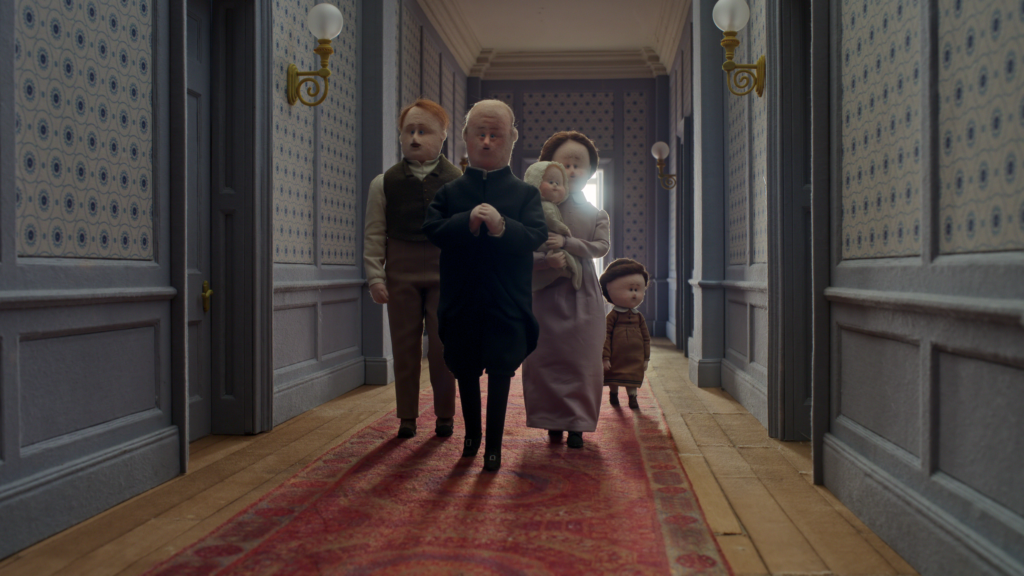
“It’s unusual to find filmmakers in the stop-motion world like Emma and Marc whose work is so dark and brooding, so that was an immediate attraction. Marc was also the DP on their earlier films,” says Hadley. “I found the style of their productions and the felt characters starring in them so unique, and I was intrigued to find out more about their creative process.”
Each time Hadley works with a new director, it’s a new journey. “Regardless of whether it’s live action or stop frame, it’s about establishing a new relationship and method – it’s never the same thing twice.” This shoot also presented a new production process for De Swaef and Roels who had worked independently in Belgium on their previous films. They described their process as “feeling their way through shots”. These productions were mostly funded through grants rather than studio-backed like the Netflix film which in turn introduced them to sharing ideas and working with a larger crew.
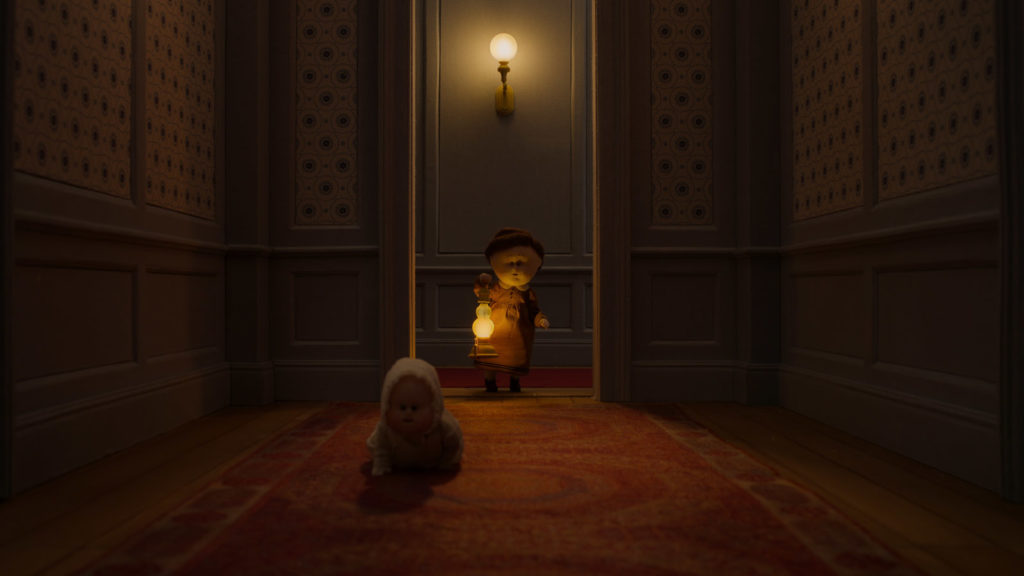
The initial plan was to shoot at a London-based studio, but when COVID hit, the decision was made to shoot in Manchester for financial and practical reasons and due to a shortage of studio space in the capital city. The enchanting stories were captured at the studios of Mackinnon and Saunders – a company renowned for specialising in puppet-making.
The prep period was also affected by the pandemic, reducing the time available to explore options ahead of the shoot. These discussions took place during an intensive period of testing when Hadley arrived in Manchester, two weeks before shooting commenced. Extensive talks had already taken place between the directors and talented production designer Alexandra Walker, who Hadley had previously worked with, and who cohesively united the three stories within the theme of the house.
Walker’s production design focused on the two main environments the first story would play out in – the cottage the family initially live in, which needed to be lit for both daylight then with oil lanterns at night and the grand, new house they move into which is lit with ‘modern’ gas fixtures. Both environments demanded firelight effects, especially for the dramatic culmination of the film. “When elements we are shooting are made in a workshop, they can be built in fluorescent or natural light rather than tungsten which we predominantly used,” says Hadley. “Alex understands the stop-frame process and that whatever is filmed needs to be tested under the right light before shooting begins.”
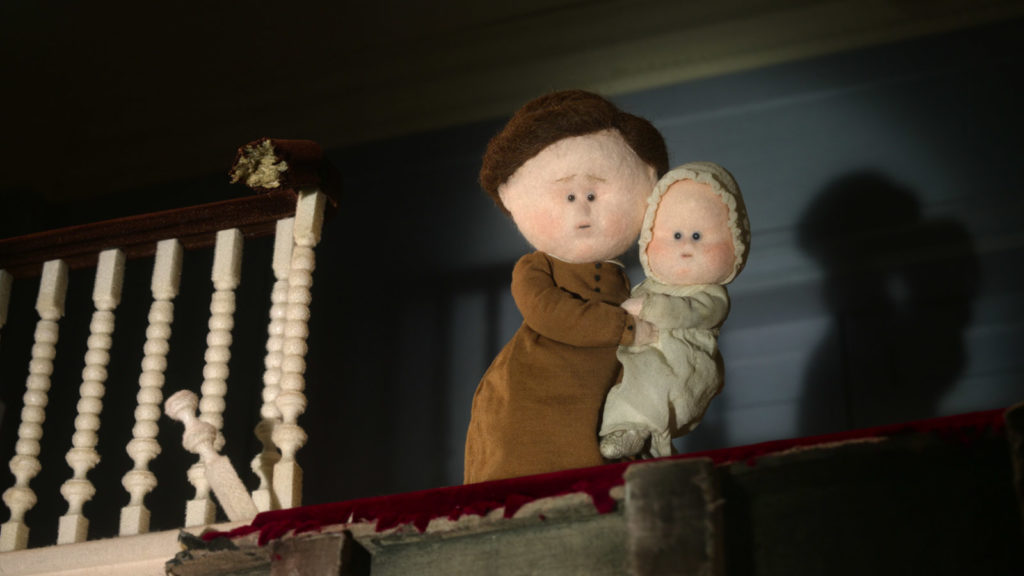
Prior to the shoot and in tandem with her design work and technical drawings, Walker created boards mounted with wallpaper fabric in a variety of colours so Hadley could shoot practical light tests exploring how the sets would react to certain gels and light treatments. Tiny practical light fixtures, just a few centimetres high, were also designed by Walker. The variety of lanterns, gas wall fixtures and chandeliers each with their own hand-blown glass shades were delivered to Hadley who tested different ways of illuminating these miniature practicals, experimenting with ‘grain of wheat’ tungsten bulbs and LEDs until the right combinations were established. Using a puppet from the directors’ previous films, he conducted further tests to examine how the texture of the characters’ unique felt faces appeared under light and on camera.
The unique stop-motion masterpiece is a finely tuned combination of production design, art direction, set dressing, lighting, along with the many intricate details which are constantly modified during the process of organic development. Accomplishing a feel evocative of an 1800s house was largely realised through the sets which were designed and built by Andy Ferago’s Clockwork Frog Films in Stockport. “You rely on people such as Andy with broad experience because things can go horribly wrong if the materials aren’t right causing elements to separate under the lights. As the sets are shot over a long period of time, things invariably move and change shape with the altering temperature and humidity which also needs to be considered.”
Hadley aims to finalise most of the colour and look of his stop-frame projects on set “because it’s such a controlled, carefully managed environment, you’re testing gels and you can mix the colours on set – you make those broad colour decisions up front.” When it comes to the grade, which on this occasion was carried out by Andy Glasman at Goldcrest Post, most of the adjustments involved making some of the fire effects richer and bringing them closer together because mixing tungsten lamps, the tiny flicker balls in the fireplace, and small LED sources sometimes resulted in slight colour discrepancies.
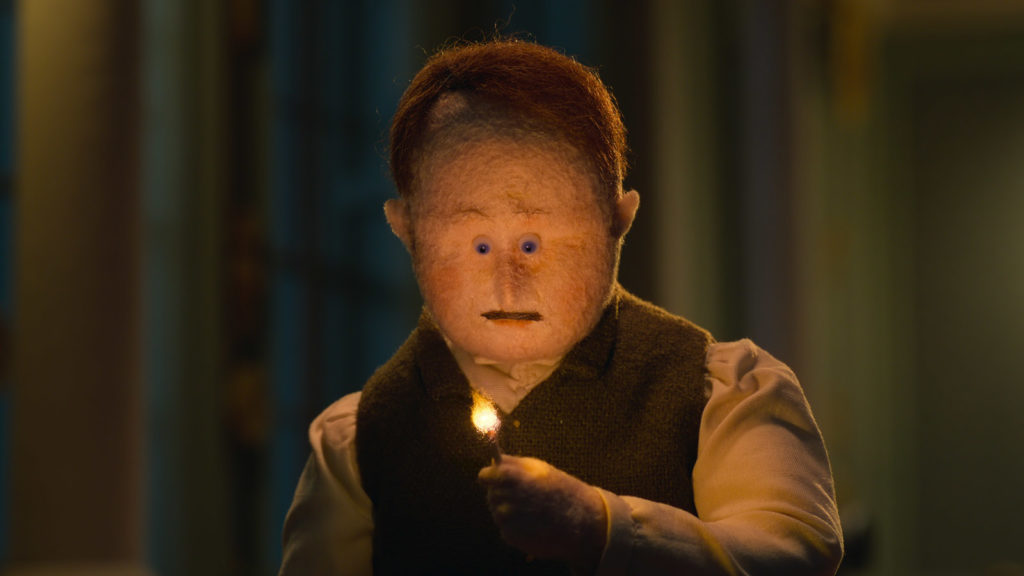
Putting a stamp on reality
The House was captured using a Canon EOS 5D Mark III – a camera Hadley still considers a workhorse for stop-motion. “The traditional cameras used for this type of production tend to be Canon bodies,” he says. “The Canon 5D Mark II, which we used on Frankenweenie, made a big impact, and now the options have opened up even further with subsequent releases and the advent of mirrorless bodies with ever increasing resolutions and higher and cleaner ISO sensitivities.”
Hadley’s team shot RAW files at the highest resolution, so there were more options for the images to be used in post and by Nexus’s VFX department, “brilliantly led” by visual effects supervisor Germán Díez. “Essentially, the camera RAW files get rendered into TIFFs maintaining the greatest latitude possible, important for our film which contained so much highlight and shadow detail. They were then converted to EXR for VFX compositing and the post pipeline before they hit the final HDR grade. There are many different routes stills can take to become a moving image format but this one worked out really well,” Hadley elaborates.
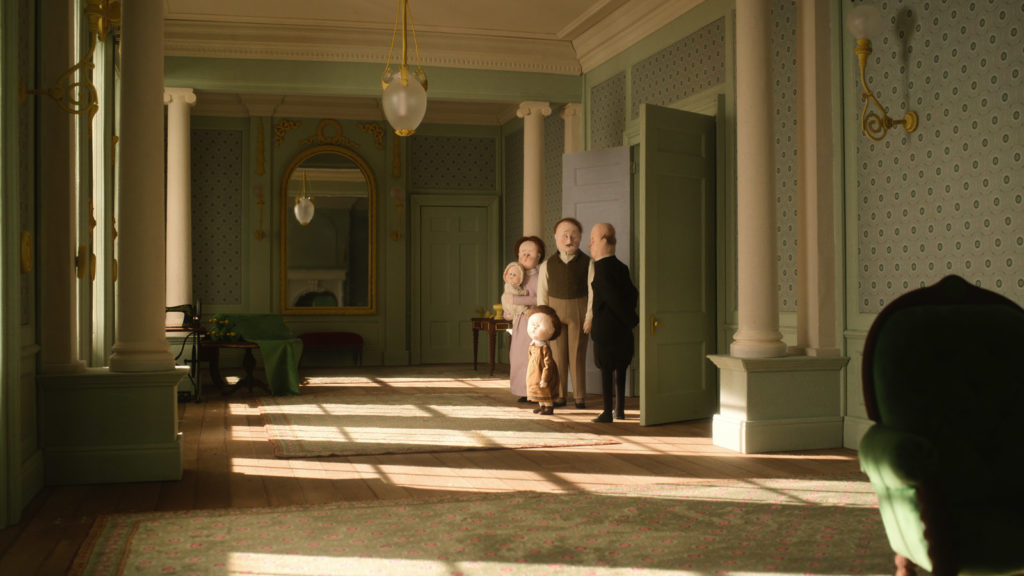
While the camera plays a significant part in the success of stop-motion, Hadley believes lens choice is even more crucial. On this occasion, the stories were self-contained, meaning Hadley and DP Lewis – who shot the other two chapters – did not need to maintain a consistent look. However, as they would share equipment, in-depth discussion was required to determine which lenses and filters would suit the whole production.
Having shot with Contax Zeiss SLR lenses, adapted for Canon bodies, and Voigtlander lenses for many years, Hadley believed these should make up the vast arsenal of lenses required for The House. Lewis agreed the choice of glass would also suit him, despite the different stylistic approach he would adopt for his portions of the film, capturing more wide-angle shots compared to the longer focal lengths used for Hadley’s first chapter.
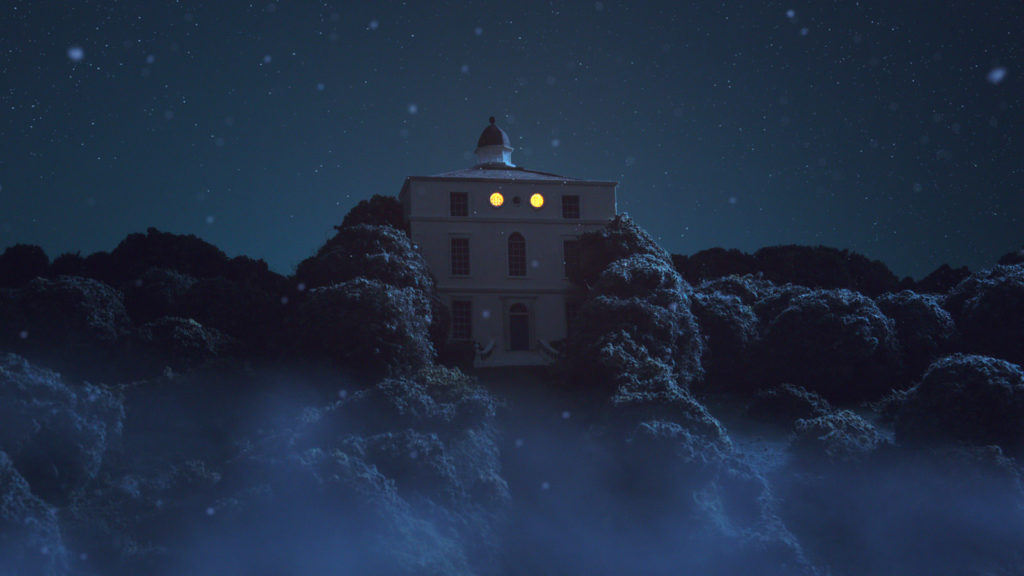
Due to the long-term nature of the project, which saw Hadley shoot for six months to capture the first chapter, the team decided it was more cost-effective to buy rather than hire the package. An expert in this field, 1st AC Mark Swaffield (chief camera assistant on Isle of Dogs) was responsible for sourcing the lenses in the required focal lengths from a selection of specialist photographic shops. “James and I needed many duplicates because we were working in separate studios that were partitioned into many units, so you might need a 35mm on three units and a 50mm on another two,” says Hadley.
The cinematographers weren’t looking for lenses with an “old character or aberrations.” They wanted “clean, sharp glass because animation is a contained, designed universe in itself – you’re trying to put a stamp on reality through the look of a lens.” This saw them rely mainly on ‘70s and ‘80s vintage Contax Zeiss which are “similar glass to Zeiss Super Speeds in their character and sharpness.”
With much of the work being close-up, macro lenses were an important addition to the kit list, with go-to glass used to capture story one including the 60mm Contax Macro and 90mm Voigtlander due to the very close focus they offered.
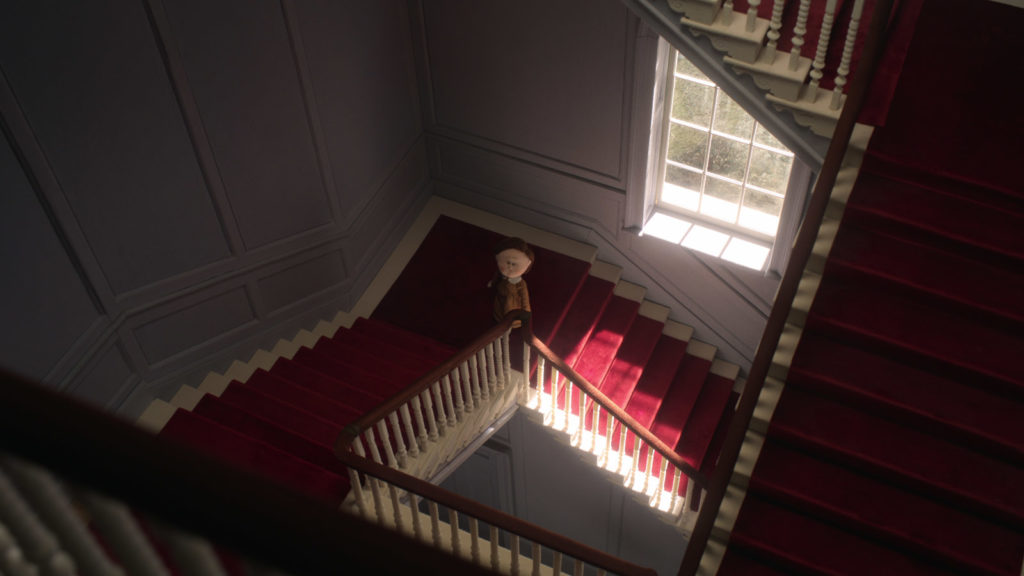
The process of shooting a stop-frame production differs greatly to the live-action projects Hadley has lensed. After framing and lighting the shot, motion control and lighting effects are programmed before everything is tested and recorded in Dragonframe stop motion software which captures the frames and runs the cameras. “Testing up front, checking, setting, and fixing everything so it doesn’t move is crucial before you close the curtains so the animator can begin their work,” he says. “There might be several units in different stages of completion that I’m jumping between.”
A project the size of The House began with four animators on the first chapter and then increased to five or six at once as the shoot progressed. “It’s a huge juggling act, one where you’re constantly keeping the crew busy, because the busier the animators are the more seconds a day you’re capturing,” says Hadley.
Whilst the film was obviously created completely artificially in the studio it still needed to look completely natural in its lighting and be carefully considered. “The first chapter had a moody, Northern European, soft-lit look which I loved. The walls and textures of the small house had a luminosity to them, so you never got a hard sheen or a kick off a surface because it was quite matte, diffused material,” says Hadley.
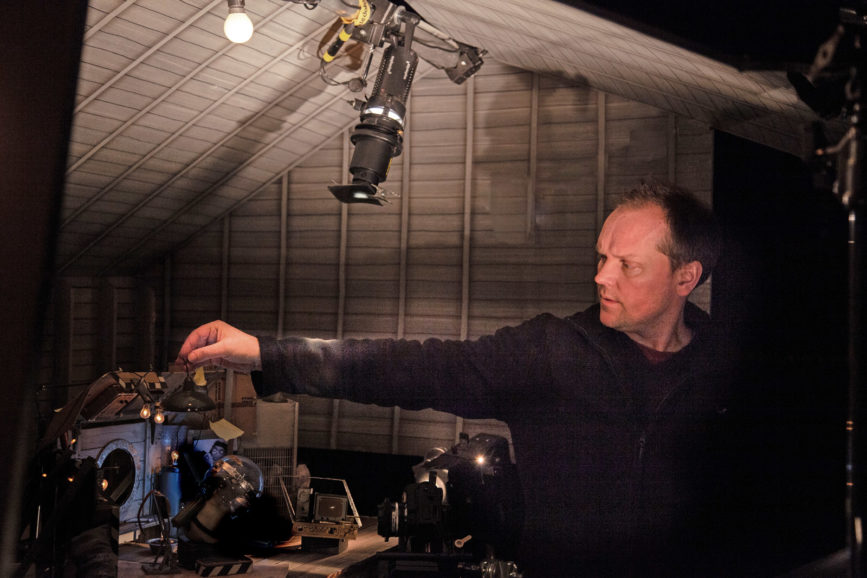
Moving into the larger house environment presented some challenges, particularly in the drawing room, one of the largest sets. “In one shot we wanted strong sunlight coming through the windows on one side of the set,” says Hadley. “With stop-frame small model shots, when you have a hard light source coming through a window at fairly close range it spreads unrealistically because that lamp can never be a comparable distance away as the sun would be.”
To mitigate this, the lamp was positioned on the other side of the set, so light was bounced off mirrors through the windows. Alongside many tungsten fixtures, Hadley and gaffer Justin Noë relied on DLH4 Dedolights often with projector lenses and 300w, 650w, 1kW and 2kW ARRI fresnels. LEDs, gelled to modify and warm up the colour, were then placed inside the gas lamps and chandelier.
“Justin is also highly skilled as a miniature practical spark. In one scene, Raymond strikes a match which is only a few millimetres big. It features a nano LED the size of a pin head on the end with a wire running down the matchstick and away from the puppet. Those shots took a lot of planning and testing,” says Hadley. “There were also tiny blue nano LEDs in the candlesticks in the dining room scene that were dipped in glass paint to produce a rich ruby glow.”
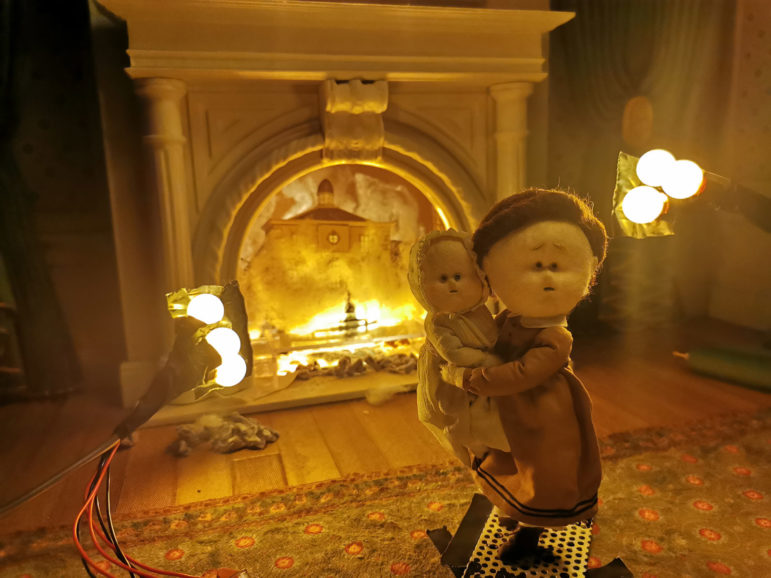
The most complicated scenes to film were those incorporating atmospheric effects such as fire, which played a substantial role in the narrative. A separate test unit was set up to explore the options, led by animation director Tobias Fouracre. “Whenever I asked Emma and Marc how they wanted to achieve an effect they said it had to be made of wool because the felted characters and their whole world were made of wool and fabric,” says Hadley.
Despite “taking the light beautifully and being a lovely texture to work with” the unrefined wool had its problems. Creating the fire effect required the wool to be underlit with flickering flame-coloured lights. “The underlit flames in the fireplace looked cool but didn’t really give out any light so I needed a source that looked like it was emanating from that point in the fireplace,” says Hadley. “Marc and Emma didn’t want to use any CG for this which I understood as the world they create is nothing like CG. This all needed to be achieved with practical effects on set.”
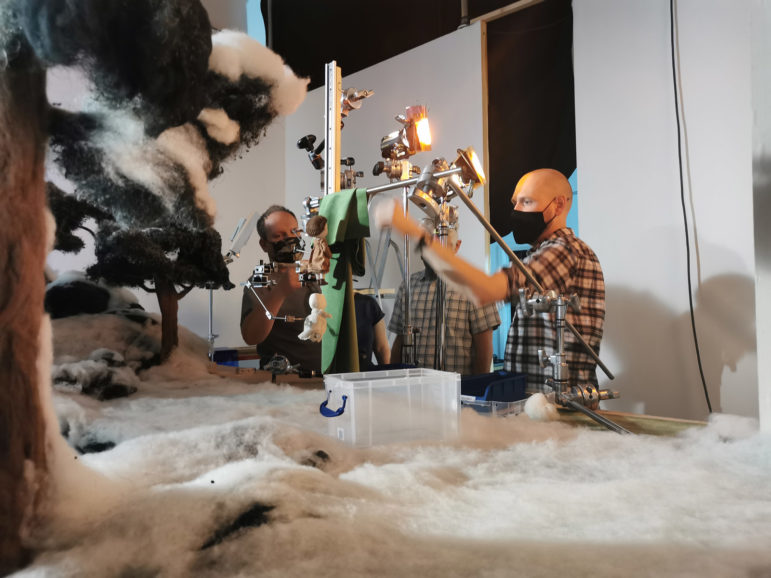
Hadley and spark James Owens found the answer in plastic balls that are 1cm in diameter and are often used in chefs’ kitchens. A hole was drilled in one side allowing a tiny tungsten E10 filament bulb to be placed inside. “They’re all wired together, so you get a cluster of six or eight balls, gelled with CTO to warm them up,” says Hadley. “They were programmed with flicker effects that went through Dragonframe to create a lovely flickering glow.”
Another atmosphere-focused shot which was also difficult to achieve sees a drunken Raymond meet architect Van Schoonbeek on a cold and misty night. A screen was made with a very light diffusion stretched across it and placed at the back of the set. Hadley shot it slightly out of focus to avoid picking up the detail, creating a delicate layer of diffused mistiness which the moonlight – created by a 2K shone through, with more Dedolights picking up details of the forest.
“This effect was then enhanced using wool stretched out thinly on a piece of glass next to the lens and shot out of focus, with a very low-level spot of Dedolight illuminating the mist,” says Hadley. “That was programmed on a little motion control tracker to travel very slowly across the scene, creating a layering of mist and atmosphere that’s rarely scene in stop-frame because it’s so hard to achieve.”
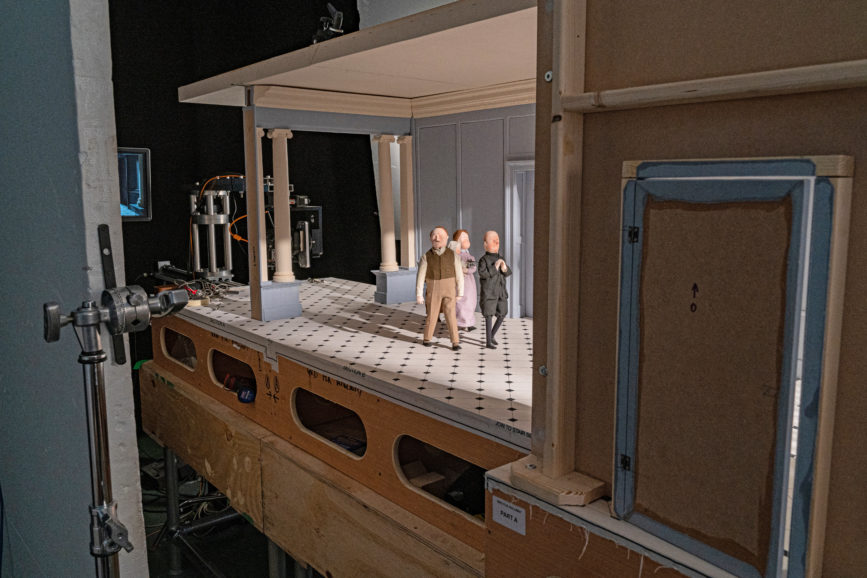
Hadley was also proud to have successfully accomplished a complicated transitional effect as the sun rises over a hill in the final scene of The House. “We worked with a laser-cut disk of mirror board – with layers of amber gel to make it red – and stuck it on a little pole which we poked over the top of the landscape. A Dedolight ??which?? was then bounced really close to it, with the light almost flaring the lens.”
Unlike live action, when working in stop-frame, the possibilities are endless. The thrill of working with so many types of material and concepts and collaborating with a unique community of creators is a constant appeal for Hadley. “The next production might be made of wood, plaster, or even cheese! You’re often dealing with new surfaces and materials that take the light differently,” he says. “That’s why it’s so exciting – there’s always something new to explore and challenges to solve which keep it fresh.”







